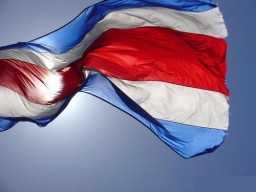
We insist that all Spanish speakers can understand each other, but it is noteworthy that every nation and every region can have its own characteristics. This is precisely what enriches any language.
Although Central American countries are geographically much smaller and closer together than those in North America and South America, there are many reasons why a language can differ notably from that of a neighboring country: the indigenous peoples, migration flows, economic policies, idiosyncrasies.
Central American Spanish is as diverse as the cultures of its nations: Panama, Guatemala, El Salvador, Honduras, and Nicaragua, among others.
In this article we will focus on Costa Rica.
Spanish is the official language, and despite being a small country, its territory is divided into seven provinces, which in turn are divided into eighty-one counties. This is not a minor detail. It highlights that this nation is very rich in terms of the variety of its Spanish: the number of idioms, as well as the adaption into Spanish of foreign words and the Costa Rican accent have molded a very distinctive variation of Spanish.
The population of Costa Rica will reach five million in a few years, and although the mother tongue is Spanish, other languages are frequently used: English, French, German, and Italian. For this reason, public and private television broadcast in Spanish and English. Also, there are some examples in the print media of the use of both languages.
Regardless of the country’s geographical boundaries, three types of Costa Rican culture can be distinguished: that of the Valle Central, typical of peasant farmers; that of the Guanacaste pampas and that of the Afro-Caribbean culture of Limon province. Its origin is a fusion, with a mix of the indigenous race (although lower in proportion than in other Central American countries), the Spanish colonists and Afro-Caribbean influences.
Some Costa Rican expressions are:
Pura Vida!: an expression used as a greeting, even as thanks;
Tuanis: used to say “good” or simply to show enthusiasm or admiration;
Mae: used to refer to friends or to anyone in general;
Qué guava!: used to say “What luck!”;
Ahí los vidrios: A way to say “See you there”;
Amarrar el perro: term meaning to not pay a debt;
Freno de mano: generally used to refer to someone’s partner;
La señora de los frescos: used to refer to rain;
Un blanco: A cigarette
Some expressions and phrases can be understood according to the context, others, however, can be very confusing. The latter presents a challenge to the translator. Looking for a literal translation can lead to a completely incorrect interpretation, such as with the phrase “vino sin su freno de mano”. How would we translate“la señora de los frescos”? What would be the equivalent metaphor in each type of Spanish we are considering?
As we have seen, Costa Rican Spanish is incredibly rich and cannot be simplified as simply “Spanish”. It is interesting to travel to each of the different nations and be surprised by their cultures.
For more information about the different types of Spanish, you can contact “Translation Services”.





